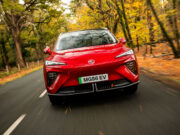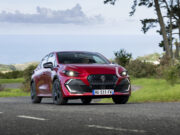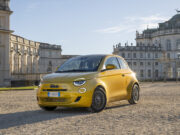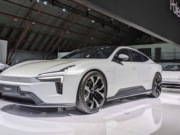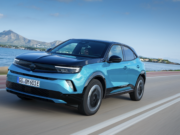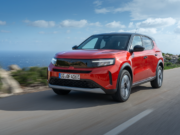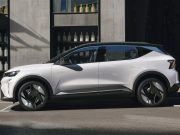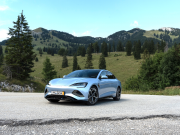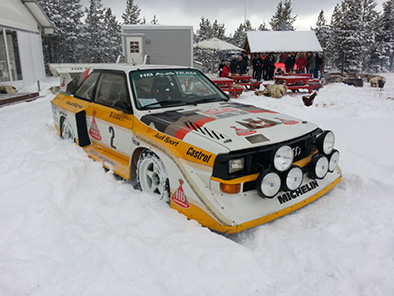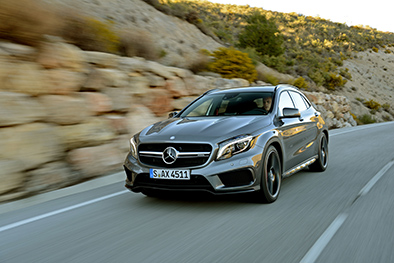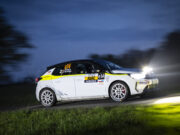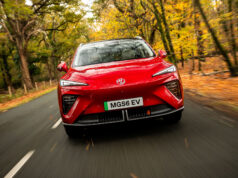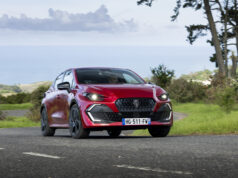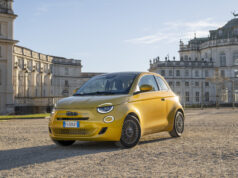The Volkswagen Golf celebrates its 50th anniversary this year, marking half a century of evolution and influence in the automotive industry. Launched in 1974 as a successor to the iconic Volkswagen Beetle, the Golf quickly established itself as a game-changer in the compact car market, offering a blend of practicality, reliability, and driving pleasure that made it one of the world’s most beloved hatchbacks. Over the decades, the Golf has seen eight generations, each bringing innovations that have redefined what a compact car could be.

The first-generation Volkswagen Golf, also known as the Mk1, debuted in 1974. Designed by the Italian designer Giorgetto Giugiaro, it was a departure from the rear-engined, air-cooled Beetle that preceded it. Instead, it featured a front-engine, front-wheel-drive layout and a water-cooled engine, which was revolutionary for Volkswagen at the time. The Mk1’s boxy shape and compact size made it agile and practical, appealing to a wide audience and setting the foundation for what would become the “hot hatch” segment. The Golf GTI, released in 1976, took this concept to a new level, adding performance and sportiness that appealed to driving enthusiasts and solidified the Golf’s reputation as more than just a practical family car.

The second generation, or Mk2, launched in 1983, built on the success of the Mk1 by refining its design and improving the interior space. It introduced groundbreaking features such as anti-lock brakes (ABS) and all-wheel drive in some versions, showing Volkswagen’s commitment to safety and innovation.

The Golf’s success continued with the Mk3, which arrived in 1991 and won European Car of the Year in 1992. This generation saw the introduction of standard safety features like dual front airbags and side-impact protection, as well as the first-ever Golf TDI, which highlighted Volkswagen’s advances in diesel technology.

The Mk4, launched in 1997, brought a more refined and upscale feel to the Golf lineup, with improved build quality and a more sophisticated design although some stated the additional weight made it less fun to drive. This generation also saw the debut of the legendary R32, a high-performance model that featured a 3.2-liter V6 engine and all-wheel drive. The R32’s popularity paved the way for the eventual Golf R models, which have since become some of the most sought-after performance-oriented Golfs.

The fifth generation, or Mk5, introduced in 2003, marked a leap forward in terms of technology and performance. The Mk5 GTI was praised for its turbocharged engine, offering a perfect blend of everyday usability and sporty performance.

With the Mk6, Volkswagen focused on refining the Golf’s design and improving fuel efficiency, which became increasingly important as environmental concerns grew.

The seventh-generation Golf, or Mk7, introduced in 2012, represented a significant step forward with Volkswagen’s new MQB platform. This modular design allowed for more efficient production and weight reduction, improving both fuel economy and handling. The Mk7 also saw the debut of the Golf GTE, a plug-in hybrid model that emphasised Volkswagen’s commitment to electrification.

The latest generation, the Mk8, was introduced in 2019 and brings the Golf firmly into the digital age. Featuring a fully digital cockpit, advanced driver-assistance systems, and improved connectivity, the Mk8 is a reflection of how the Golf has evolved to meet modern demands. The Golf Mk8 lineup includes traditional gasoline and diesel engines, mild hybrids, and a plug-in hybrid, offering a range of options for different drivers. Notably, the Golf’s journey toward electrification continued with the release of the all-electric ID.3, which has been touted as a spiritual successor to the Golf, signalling Volkswagen’s broader shift toward an electric future.
Beyond its engineering and design achievements, the Golf has had a significant cultural impact. It has become a status symbol, representing reliability, quality, and understated style. Enthusiast communities have formed around the Golf GTI, Golf R, and classic models, celebrating the car’s heritage and versatility. Its adaptability has allowed it to appeal to a wide demographic, from first-time car buyers to performance enthusiasts and families. It has been celebrated for its commitment to quality, innovation, and adaptability. Across its eight generations, it has introduced groundbreaking technologies that have set industry standards, such as turbocharging, direct fuel injection, and advanced driver-assistance systems. The Golf’s mix of practicality, performance, and reliability has allowed it to remain competitive even as the automotive landscape has evolved.
As the Volkswagen Golf reaches its 50th anniversary, it faces a rapidly changing automotive industry focused on sustainability and electrification. While the Golf’s future as a combustion-engine model may be uncertain, its legacy is likely to continue in Volkswagen’s electric ID lineup. As the world shifts towards zero-emissions vehicles, the Golf’s influence will endure, either as an electric model or as an inspiration for Volkswagen’s future compact cars. The Golf’s 50-year journey exemplifies how a single model can evolve and adapt, consistently remaining relevant to changing consumer needs and technological advancements.



